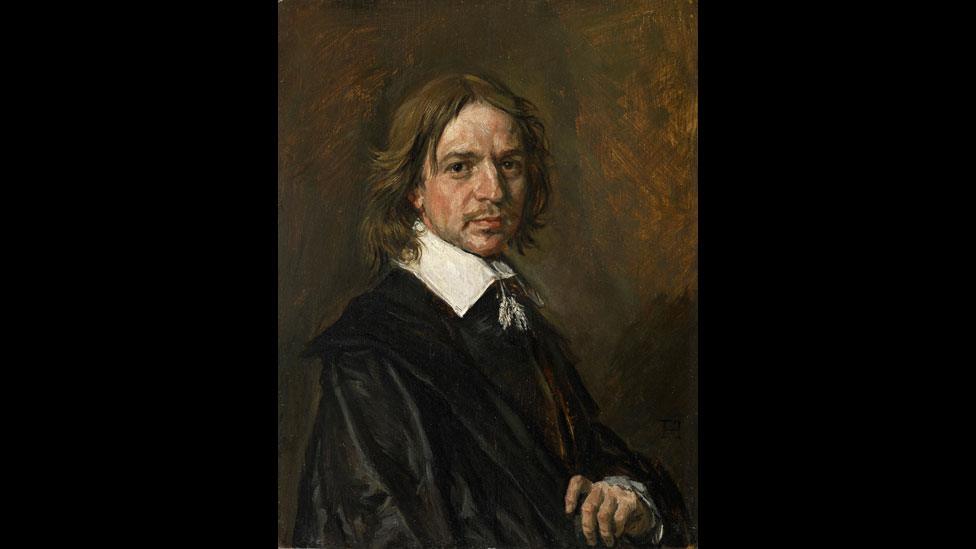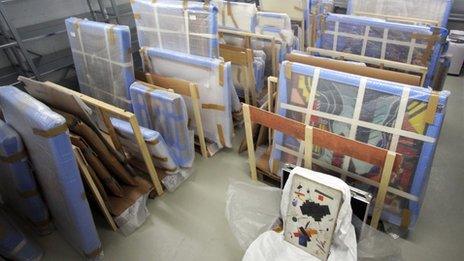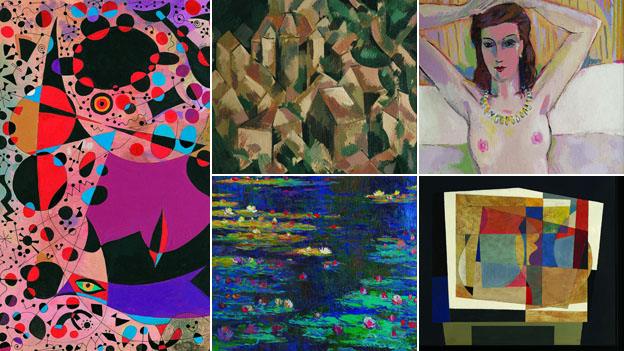Sotheby's declares 'Frans Hals' work a forgery
- Published

The work was reportedly sold for £8.5m in 2011
A work thought to be by Dutch artist Frans Hals that sold for a reported £8.5m ($10.8m) has been declared fake.
Sotheby's said it had "rescinded the sale and reimbursed the client in full" after tests revealed the painting, An Unknown Man, was "undoubtedly" forged.
The investigation followed reports, external that a sophisticated forger is at large.
The forger is also believed responsible for a painting attributed to Italian master Orazio Gentileschi that was loaned to the National Gallery.
The painting, David Contemplating the Head of Goliath, was loaned to the gallery by its current owner in 2013 and was on display until March this year. It has since been returned.
The National Gallery said it "undertakes due diligence research on a work coming on loan as well as a condition check", and that these were carried out on the painting.
"In the time the painting was at the National Gallery we had no obvious reasons to doubt that David with the Head of Goliath was a work by Gentileschi."
'Modern materials'
Another disputed work, attributed to Renaissance artist Lucas Cranach the Elder, was seized by authorities in France in March after doubts were raised about its authenticity.
The work had been loaned to an exhibition in Aix-en-Provence by Hans-Adam II, the reigning Prince of Liechtenstein.
According to The Art Newspaper, external, the work came on to the market in 2012 and was sold "in good faith" to the prince in 2013.

Analysis by BBC arts editor Will Gompertz
Page one of any decent guide to the business of acquiring artworks should spell out in bold letters, BUYER BEWARE.
Unless you have bought the painting or sculpture directly from the studio of a living artist, you are running the risk of buying a fake.
On the plus side, science is increasingly playing a part in authenticating artworks - but then a top notch forger tends to find ways to stay ahead of the game.
Provenance is all. If you want to reduce the odds of purchasing a fake, then you need the paperwork that details all past owners and what they have done to conserve the piece.
The more gaps in an artwork's "backstory", the greater the opportunity for Mr Dodgy to get to work. In the parlance of the motor trade, you really need to see a full service history.
Fakes are far more common than many in the art world would admit in public. Uncertainty is rarely good for business. But then just look at the success of shows like Fake or Fortune, which appear to have an endless supply of tales to tell.

Sotheby's said that "with the agreement of the seller" of the work thought to have been by Hals, which was sold in 2011, it had "informed the buyer of a possible issue with the authenticity of the painting".
It subjected the Hals painting to "an in-depth technical analysis" after links emerged between it and the Cranach.
Sotheby's said the tests "showed the presence of modern materials used in the painting in a way that meant it could not have been painted in the 17th Century".
'Best faker of all time'
Speaking on Radio 4's World at One, art historian Bendor Grosvenor called the case "extraordinary".
"What is amazing about [the painting] is the quality and the fact that it's not a copy," he said.
"Whoever has subsumed the aura of Hals when he painted this also came up with a totally fresh composition.
"If these [paintings] are fake, and I believe they are very likely to be, we are dealing with the best faker of all time."

Follow us on Twitter @BBCNewsEnts, external, on Instagram, external, or if you have a story suggestion email entertainment.news@bbc.co.uk, external.
- Published13 June 2013

- Published4 June 2012
